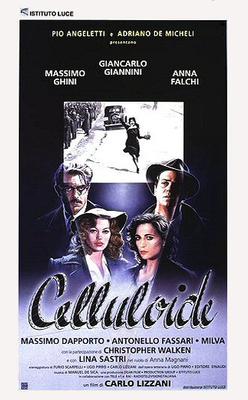
Celluloide is a 1996 Italian historical drama film directed by Carlo Lizzani from a screenplay by Furio Scarpelli, Ugo Pirro and Lizzani, based on the 1983 novel of the same name by Pirro. It stars Giancarlo Giannini, Massimo Ghini, Anna Falchi, and Lina Sastri.
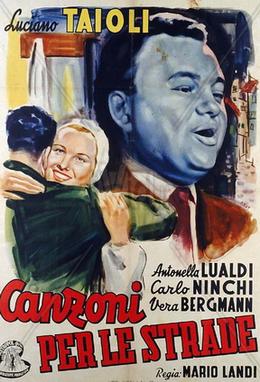
Songs in the Streets is a 1950 Italian musical melodrama film directed by Mario Landi and starring Luciano Tajoli, Antonella Lualdi and Carlo Ninchi.

The Count of Saint Elmo is a 1950 historical adventure film directed by Guido Brignone and starring Massimo Serato, Anna Maria Ferrero and Tino Buazzelli. It was shot at the Farnesina Studios of Titanus in Rome. The film's sets were designed by the art director Ottavio Scotti.

Vera Carmi was an Italian film actress. She appeared in more than 50 films between 1940 and 1956.

Peppino, le modelle e chella là is a 1957 Italian comedy film directed by Mario Mattoli and starring Gino Bramieri.

Against the Law is a 1950 Italian crime film directed by Flavio Calzavara and starring Marcello Mastroianni, Fulvia Mammi and Renato Malavasi.

The Mute of Portici is a 1952 Italian historical melodrama film directed by Giorgio Ansoldi. It is based on a play by Eugène Scribe.

Tragic Return is a 1952 Italian melodrama film directed by Pier Luigi Faraldo and starring Doris Duranti, Marcello Mastroianni and Franca Marzi. It was shot at the Pisorno Studios in Tirrenia. The film's sets were designed by the art director Giorgio Ansoldi. It earned 92 million lire at the Italian box office.

Il viale della speranza is a 1953 Italian drama film directed by Dino Risi. It grossed over 100 million lire at the Italian box office.
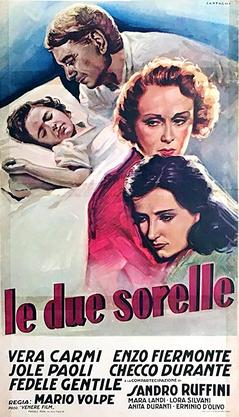
The Two Sisters is a 1950 Italian melodrama film directed by Mario Volpe and starring Vera Carmi, Enzo Fiermonte and Checco Durante. The film's sets were designed by the art director Ivo Battelli. It was made at the Palatino Studios in Rome while location shooting took place around Matera in Basilicata.

Arrangiatevi!, internationally released as You're on Your Own, is a 1959 Italian comedy film directed by Mauro Bolognini.
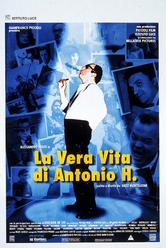
La vera vita di Antonio H. is a 1994 Italian mockumentary film directed by Enzo Monteleone and loosely inspired to real life events of Alessandro Haber. For this film Haber won the Silver Ribbon for best actor.

Giacomo the Idealist is a 1943 Italian drama film directed by Alberto Lattuada and starring Massimo Serato, Marina Berti and Andrea Checchi. It represents the directorial debut of Lattuada.

Giuseppe Verdi, released theatrically in the US as The Life and Music of Giuseppe Verdi and on video as Verdi, the King of Melody, is a 1953 Italian biographical musical melodrama film starring Pierre Cressoy and directed by Raffaello Matarazzo. It is based on adult life events of the composer Giuseppe Verdi. The film was a commercial success, grossing over 957 million lire at the Italian box office.

Pietà per chi cade is a 1954 Italian melodrama film written and directed by Mario Costa and starring Amedeo Nazzari, Antonella Lualdi and Nadia Gray.
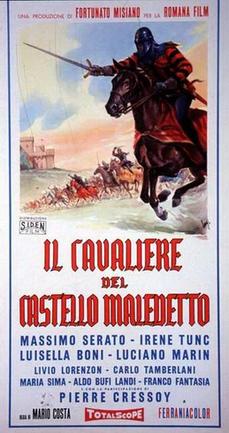
Cavalier in Devil's Castle, also known as The Cavaliers of Devil's Castle, is a 1959 Italian swashbuckler film written and directed by Mario Costa and starring Massimo Serato, Irène Tunc and Luisella Boni.

Milanese in Naples is a 1954 Italian comedy film directed by Enzo Di Gianni and starring Eva Nova, Ugo Tognazzi and Carlo Campanini. The film's sets were designed by the art director Oscar D'Amico.
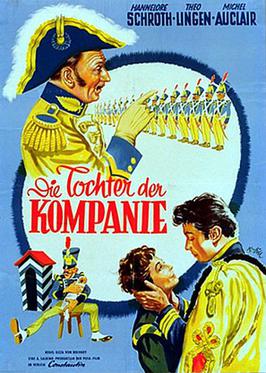
The Daughter of the Regiment is a 1953 musical comedy film directed by Géza von Bolváry and Goffredo Alessandrini and starring Antonella Lualdi, Hannelore Schroth, and Isa Barzizza. Based on the opera The Daughter of the Regiment by Gaetano Donizetti, it was made as a co-production between Italy and West Germany with separate versions released in the two languages.

The King's Prisoner is a 1954 Italian historical adventure film directred by Giorgio Venturini and starring Pierre Cressoy, Andrée Debar and Armando Francioli. It is based on the novel The Man in the Iron Mask by Alexandre Dumas.

The Other is a 1947 Italian crime melodrama film directed by Carlo Ludovico Bragaglia and starring Blanchette Brunoy, Fosco Giachetti and Maria Michi. It was an early example blending film noir and melodrama in Italian cinema. The film's sets were designed by the art director Gianni Mazzocca.


















